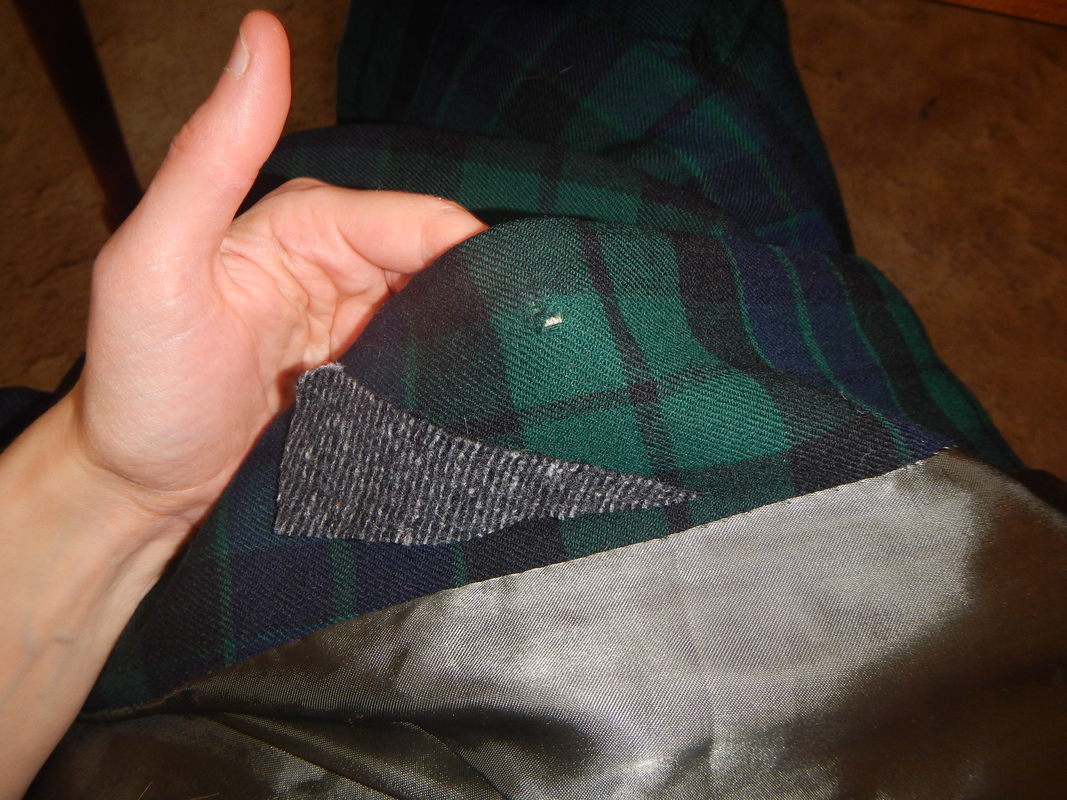|
One of my medium-weight jackets (a nice wool tartan labeled Moss Brothers Covent Garden*, which has been very serviceable to me) lost a button on Christmas day, while I was shoveling ice off the driveway. Since another button was loose, I took the opportunity to change all three buttons for prettier ones, and took pictures along the way! The original buttons were plain black plastic shaft buttons. The new ones are bronze flat buttons with maple leaves on them in bass relief. There was even a worn area that needed patching, which makes me childishly excited. If such things interest you (or childishly excite you), read on! *It's a women's jacket, but I don't see any women's stuff on their website now, so perhaps they no longer make womenswear. There are different ways to sew on a button, depending on the type it is and the fabric it's going on. Buttons on jackets get a lot of wear, because they can be pulled quite hard if you're bundling up. And unlike shirts or vests or other garments, which might only get worn once a week, a jacket gets worn every day when the weather is cool. So the area under the button might need reinforcement, and the best way to do that is with a second, flat button, as you'll see in a moment. Plus, jackets are thicker fabrics than shirts, so the button needs to stand up above the fabric to make room for the buttonhole side of the front. Some buttons have a shaft on them, like a stalk they stand on, but if they don't have a shaft, you need to make one with your thread. I'll show you that in this post, as well. THIS PROJECT
TUTORIAL - SEWING A BUTTON ON A JACKETClick on any picture to enlarge.
Now it's time to put the inner button on. What's the inner button for? Well, let's imagine a jacket with the outer buttons sewn to the fabric alone, no inner button. Every time you manipulate the outer button, you pull on its threads, which means pulling on a tiny area of your fabric. This is how holes in the fabric happen! But if there's an inner button sewn in the same loops of thread as the outer button, that creates a new foundation: when you manipulate the outer button, the tension transfers to the inner button and thus a stronger and wider area than just the fabric. The fabric is sandwiched between the two buttons, and therefore cannot twist and get damaged.
The final step is to tie the thread off somewhere where it won't be subject to wear. In this case, I was able to poke the needle through to the back and knot the thread around some of the threads back there. I think the new buttons step up the style of my already stylish jacket! There are still plain black plastic buttons on the (non-functional) sleeve vents, but I don't mind them. The front, though, looks great with the interesting bronze buttons.
0 Comments
Leave a Reply. |
Karen Roy
Quilting, dressmaking, and history plied with the needle... Sites I EnjoyThe Quilt Index Categories
All
Archives
March 2024
|






 RSS Feed
RSS Feed